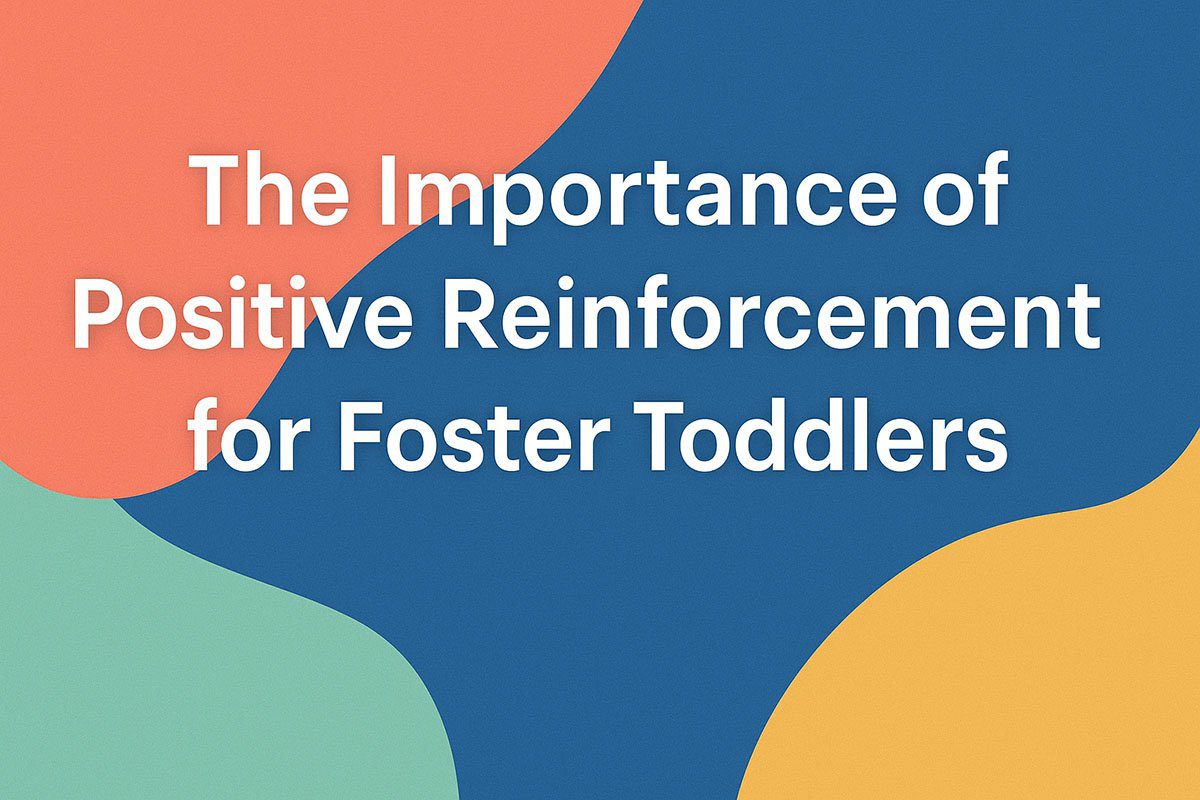A child’s early years lay the groundwork for their subsequent emotional, social, and cognitive development. Positive reinforcement, a technique that encourages desired behaviours by rewarding them, is a powerful and essential tool in helping foster toddlers thrive. It not only aids in behaviour management but also plays a crucial role in building self-esteem, creating secure attachments, and promoting overall well-being.
Understanding the Unique Needs of Foster Toddlers
Foster toddlers may exhibit defiance, aggression, withdrawal, or anxiety as they try to make sense of their world and cope with overwhelming feelings. It’s crucial for foster carers to understand that these behaviours are often a response to past trauma rather than intentional misbehaviour. Providing a safe, stable, and predictable environment is the first step in helping foster children when you become a foster parent.
What is Positive Reinforcement?
Positive reinforcement is a behavioural technique that involves presenting a motivating or desirable stimulus after a specific behaviour is displayed, making that behaviour more likely to occur in the future. Instead of focusing on punishing undesirable actions, positive reinforcement highlights and rewards positive ones. For toddlers, these rewards can take many forms, such as verbal praise, a hug, a high-five, a sticker, extra playtime, or a small, age-appropriate treat. The most important things are that the reinforcement is consistent, given right after the desired behaviour, and has meaning for the child.
Building Self-Esteem and Confidence
One of the most significant benefits of positive reinforcement for foster toddlers is its impact on their self-esteem and confidence. When a toddler is praised for trying a new food, sharing a toy, or calming down after being upset, they begin to see themselves as capable and good. This consistent affirmation helps build a positive self-image and a sense of competence, encouraging them to take on new challenges and develop a growth mindset.
Creating Secure Attachments and Healthy Relationships
Positive reinforcement can play a vital role in building trust and creating secure attachments with their foster carers. Responding to a toddler’s positive behaviours with warmth, praise, and affection helps the child feel seen, understood, and valued. This consistent, positive interaction creates a safe emotional space where the toddler can begin to form a healthy bond with their caregiver. Modelling healthy relationship dynamics, including empathy and respect, further supports the child in developing interpersonal skills.
Encouraging Positive Behaviour and Social-Emotional Skills
A useful strategy for gently and constructively modifying behaviour is positive reinforcement. By clearly identifying and rewarding desired behaviours, such as following instructions, using gentle hands, or expressing feelings appropriately, foster carers can help toddlers learn what is expected of them. This approach is far more effective in the long term than punitive measures, which can instil fear and anxiety. Consistent positive feedback helps toddlers develop self-regulation skills, understand social cues, and learn pro-social behaviours like sharing and kindness. Praising effort, not just outcomes, is also crucial, as it encourages persistence and resilience.
Practical Strategies for Implementing Positive Reinforcement
It takes persistence, patience, and knowledge of each foster toddler’s unique needs and preferences to successfully apply positive reinforcement.
- Be Specific and Immediate: When offering praise, be specific about the behaviour you are acknowledging (e.g., “Thank you for putting your toys in the box so nicely!”). In order to help the toddler establish a clear connection, provide the reinforcement as soon as the desired behaviour is demonstrated.
- Use Varied Reinforcers: What motivates one toddler might not motivate another. Offer a mix of verbal praise, physical affection (like hugs or high-fives), tangible rewards (like stickers or a favourite healthy snack), and special activities (like an extra story at bedtime or a trip to the park).
- Focus on Effort and Improvement: Acknowledge and praise the child’s effort and progress, even if the desired behaviour isn’t perfect. This encourages a growth mindset and shows the child that their attempts are valued.
- Create a Reward System: For some toddlers, a simple sticker chart or token system can be very effective. This provides a visual representation of their progress and allows them to work towards a larger reward.
- Maintain Consistency: Consistency is key, especially for children who have experienced instability. Ensure that all caregivers are on the same page regarding the behaviours being reinforced and the methods used. Establishing predictable routines can also help toddlers feel more secure and reduce anxiety.
- Offer Choices: Whenever appropriate, give toddlers simple choices to help them feel a sense of control and empowerment, which can be particularly important for children who have felt powerless in the past.
Positive reinforcement is not just a parenting technique; it is a fundamental aspect of creating a healing, supportive, and empowering environment for foster toddlers.
For more insightful articles, please visit Bloghart.

